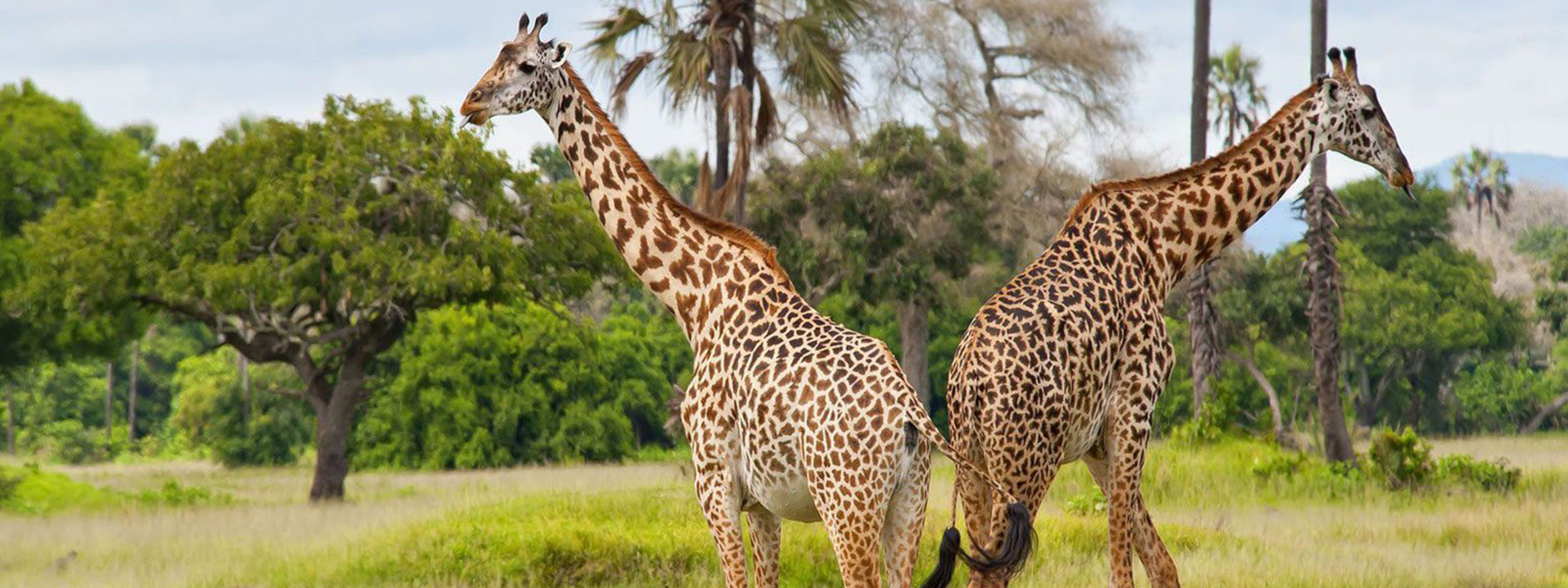Saadani National Park

About Saadani National Park
Saadani is where the beach meets the bush. It is the only park in East Africa with an Indian Ocean beachfront and the one place where those idle hours of sunbathing might be interrupted by an elephant strolling past, or animals coming to drink at the nearby waterhole. Also a sight to behold is the Swahili fishermen casting their nets at sunrise.
Size: 1100 km² / 424 mi²
Altitude: 3-75 m / 10-246 ft
Palm trees sway in a cooling oceanic breeze. White sand and blue water sparkle alluringly beneath the tropical sun. Traditional dhows sail slowly past, propelled by billowing white sails, while Swahili fishermen cast their nets below a brilliant red sunrise. Saadani is where the beach meets the bush. The only wildlife sanctuary in East Africa to boast an Indian Ocean beachfront, it possesses all the attributes that make Tanzania’s tropical coastline and islands so popular with European sun-worshipers. Yet it is also the one place where those idle hours of sunbathing might be interrupted by an elephant strolling past, or a lion coming to drink at the nearby waterhole!
Protected as a game reserve since the 1960s, in 2002 it was expanded to cover twice its former area. The reserve suffered greatly from poaching prior to the late 1990s, but recent years have seen a marked turnaround, due to a concerted clampdown on poachers, based on integrating adjacent villages into the conservation drive.
Today, a surprisingly wide range of grazers and primates is seen on game drives and walks, among them giraffe, buffalo, warthog, common Waterbuck, Reedbuck, Hartebeest, wildebeest, red Duiker, greater Kudu, eland, sable antelope, yellow baboon and velvet monkey. Herds of up to 30 elephants are encountered with increasing frequency, and several lion prides are resident, together with leopard, spotted hyena and black-backed jackal. Boat trips on the mangrove-lined Wami River come with a high chance of sighting hippos, crocodiles and a selection of marine and riverine birds, including the mangrove kingfisher and lesser flamingo, while the beaches form one of the last major green turtle breeding sites on mainland Tanzania.
What to do: Game drives and guided walks.
Boat trips. Swimming. Visit Saadani fishing village, which lies within the reserve, where a collection of ruins pays testament to its 19th century heyday as a major trading port.
One of the best ways to enjoy Saadani National Park is a sunset cruise on the Wami River, which flows through the southern part of the National Park. The river is widely known by birders for its spectacular variety of birds, including flamingos and pelicans at the river mouth. Lazy hippos and crocodiles keep cool in the water or sleep on the sand banks. Large monitor lizards move through the undergrowth, and black and white colobus monkeys perform acrobatics in the trees overhead.
Pros and Cons
A combination of beach and bush
The wildlife viewing circuit is small
Guided walks and boat trips available
Lack of wilderness appeal with human settlements all around
Most of the major safari animals aren’t present or aren’t easily seen
Closest game viewing destination to Zanzibar and connected by daily flights
A perfect beach destination for people who prefer a bush environment to a typical beach holiday resort
Wildlife
Wildlife isn’t abundant and the park is more a beach destination within the bush than the other way around. Commonly seen on game drives are elephant, giraffe, buffalo, warthog, common waterbuck, reedbuck, hartebeest, wildebeest, yellow baboon and vervet monkey. Lions and other predators are present, but rarely seen. Hippos, crocodiles and a selection of water birds can be encountered on boat trips. Saadani’s wildlife specials are the shy red duiker, the endangered Roosevelt’s sable and green turtles, for which the park is a breeding site.
Scenery
Mangroves separate the idyllic palm-lined beaches and the watercourses are fringed by riparian woodland. Inside the park is open grassland interspersed with acacia thickets.
Activities
- Safari game drives in and around the Saadani National Park.
- Perfect combination of Beach and bush.
- Boat safarion the Wami River.
- Bird watching
- Walking safari
- Explore the Swahili ruins in Saadani village, a relic of its 19th century heyday as a trade port
- Village visits to the bordering villages to experience local culture
Best time to visit:
- Climate is Coastal which is mainly hot and humid with seasonal rains combined with Savannah landscapes.
- The park’s game is at its best, or at least is most easily seen, during the dry seasons
- Generally accessible all-year round, but the access roads are sometimes impassable during April to May. Best time to visit is between January to February and June to August.
Properties:
- Saadani Safari Lodge
- Simply Saadai (Tent With a view)
- Bandas TANAPA
- Kisampa Bush Retreat
- Saadani Park Hotel
- Tanganyika Coast (Mama Tanganyika
- Vagabond Lodge